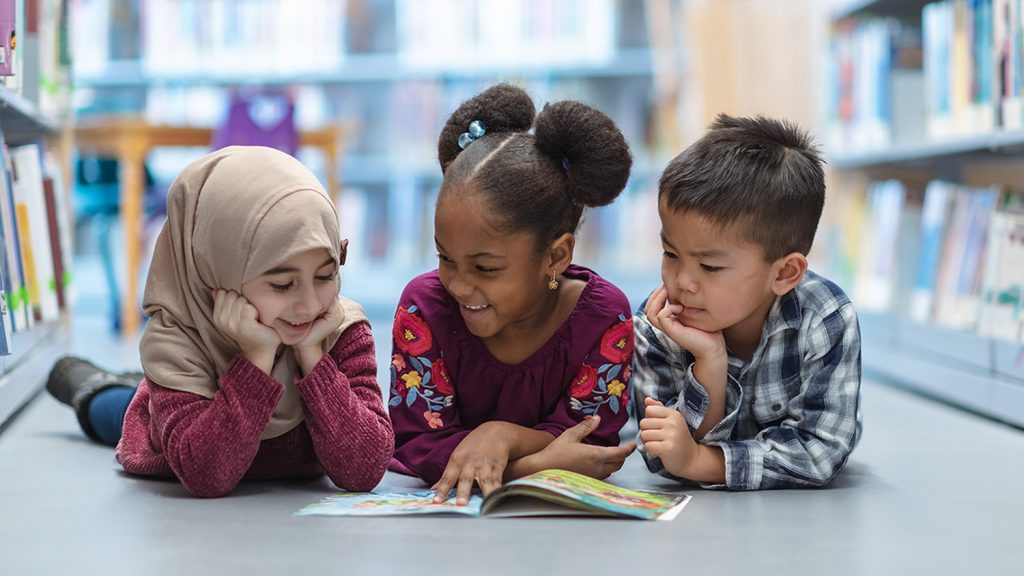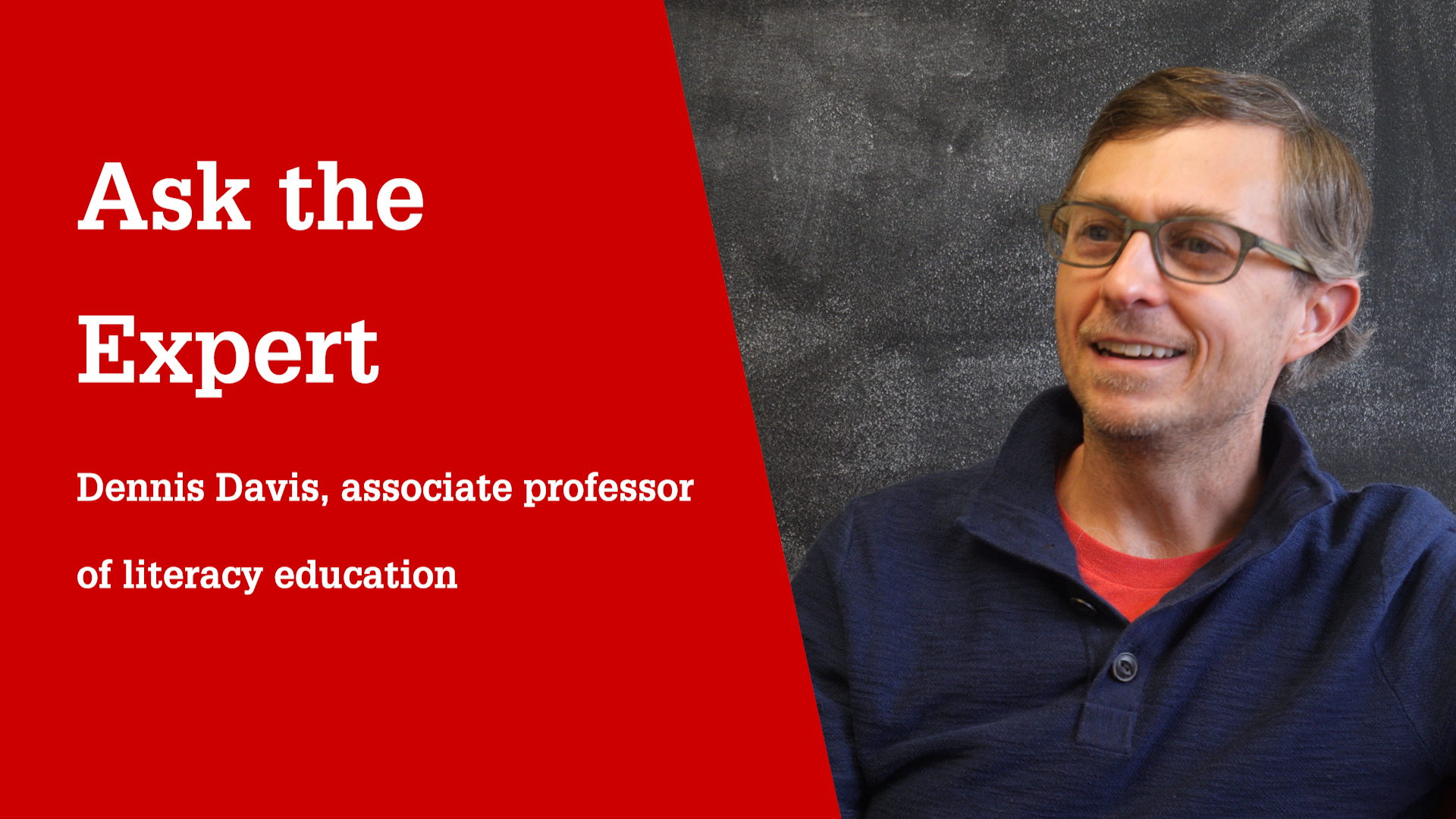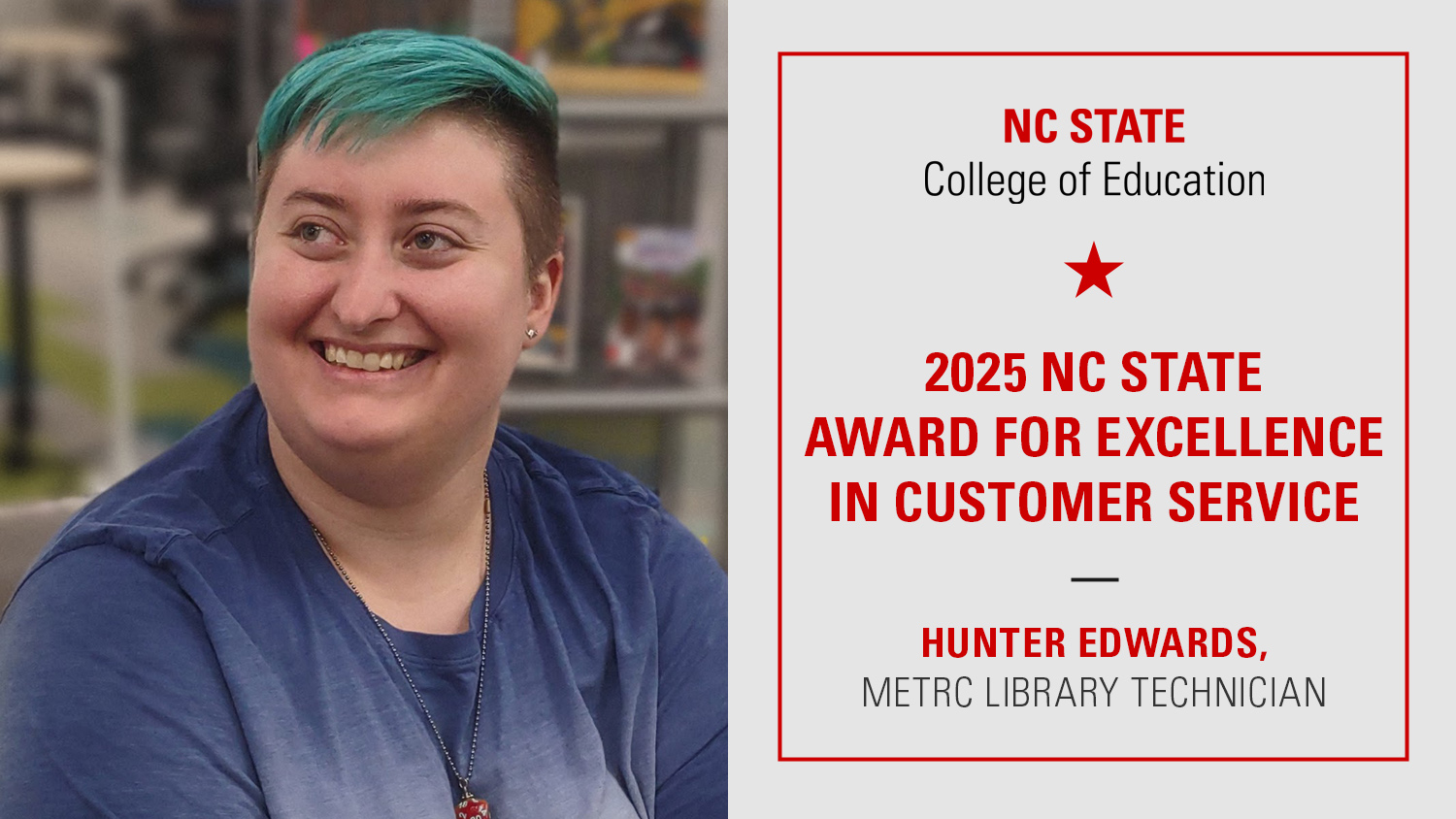How Can I Help My Students With Reading Comprehension? ‘The More We Can Integrate What We Call Reading Instruction with What We Call Content Area Instruction, the Better,’ Says Associate Professor Dennis Davis
Reading comprehension can often be a complicated process for anybody to understand, says NC State College of Education Associate Professor of Literacy Education Dennis Davis, but understanding how to talk about and model the process for children can be even tricker.
Although reading comprehension is often talked about as a single skill, Davis says the process actually involves an orchestration and accumulation of multiple subskills. Additionally, knowing how to read a text and comprehend it is not the same as being able to discuss reading in a clear, specialized way for students.
“To be an adult reader, if you’re reading well, you never think about why a sentence connects a certain way or gives you a certain idea because you have this implicit language and grammatical knowledge that you’ve automatized, and it’s just deep in your brain,” Davis said. “You never think about it again until you want to be a reading teacher, and then you have to excavate it. You have to defossilize it, give language to it, learn how to talk about it, learn how to explain it and show examples to kids.”
Although a lot of research focuses heavily on teachers’ knowledge of reading subskills related to phonemic awareness, morphology and word reading, Davis said not as much is known about how to help teachers better understand the language comprehension aspect of reading.
“I think the most difficult thing about teaching comprehension is figuring out exactly where you help individual kids, because the problem might look like it’s one thing, but it could be so many other things,” said Davis, whose research focuses on reading comprehension. “I think that teachers need to really, deeply understand how comprehension works because, without that knowledge, it’s difficult to figure out what aspect kids are actually having trouble with.”
When a teacher notices a student struggling to understand something they’re reading, Davis said it can sometimes be hard for teachers to find the root of the issue and determine where to step in with instruction.
In a majority of cases, many difficulties that appear to be related to reading comprehension are actually the result of a child struggling with word reading. In that case, teachers or intervention specialists may need to work more closely with students on phonics and practicing letter-sound correspondences.
In his work with The Literacy Space, Davis said it is fairly common to see children struggle because even though they’ve practiced letter sound patterns over and over again, the lesson doesn’t stick. In this case, Davis said he has found success having the student first practice manipulating spoken words at the phonemic level to better understand how to match letters to sounds.
Although reading comprehension difficulties are often the result of these challenges, Davis said there are cases where children who have fully mastered word reading need additional help in language comprehension.
When this happens, helping a child understand can become a tricker process, as they must learn unconstrained skills like building vocabulary and background knowledge.
Helping Students Build World Knowledge
One common issue related to reading comprehension is that a student simply doesn’t know enough about the subject that they’re reading about to be able to understand it.
A text, Davis said, is a form of conversation between an author and a reader in which the author will explicitly share some information, but will discuss other things implicitly, because they assume the reader knows the relevant information. For example, in a recent study about teachers’ knowledge of reading comprehension, Davis had teachers read a text about the wife of Charles Darwin. The text, however, never explicitly explained who Charles Darwin was, assuming the reader had already learned about him in a science or social studies class.
For a student, even if they are able to fluently read every word on the page, they would not be able to make sense of that text without the background knowledge of Darwin’s life and achievements.
“Being able to know enough to link ideas together in a coherent way is really important. That’s why content knowledge, like science and social studies content and all the other things we teach in elementary school besides reading, are really essential for reading,” Davis said. “These all feed into a system that is really involved in whether or not a kid is going to understand what they read for the rest of their lives. No matter how important reading is and how much you want to prioritize it in your instruction, you will never get kids where they need to be if you don’t also help them build up their world knowledge as they go.”

Every child will come into a classroom with different experiences and interests, and will therefore have different levels of knowledge about various topics. For this reason, Davis says it’s important that teachers get to know their students and what knowledge they bring with them to the classroom.
Knowing this can not only assist teachers in helping students build knowledge where they need it, but also help them to pick texts that will be engaging for children, especially those who are struggling with comprehension.
“In any kind of comprehension intervention, you’ve got to make sure that kids are reading things that are compelling and interesting. They’ve got to be able to connect to the text,” Davis said. “Nobody wanted to read something that’s boring or stupid. That’s just human nature.”
How Can I Intervene When My Students Struggle with Comprehension?
To help multilingual students through the Building Knowledge and Language through Inquiry (KLI) Framework, developed with Assistant Professor Jackie Relyea, Davis has created a multicomponent intervention to enable students to develop skills that are important for comprehension.
This intervention is framed around common topics in science and social studies and each module ends with a culminating project that allows students to present to others as an expert on their topics.
One intervention activity that has been particularly popular with students has been using word cards to build complex sentences. As part of the intervention, students are given four or five cards with words on them and asked to build a sentence with them. Once that has been done, the students are given two more cards and asked to add those words into the existing sentence to create a more complex sentence.
“We’re going to do that several times, so we end up building this big, beautiful, huge, masterful complex sentence with lots of embedded clauses, so we’re helping kids start to pick up on those more complex, grammatical things,” Davis said. “It’s not grammar instruction in the traditional sense. It’s about composing really good sentences but, built inside of it, is some reflection on how the English grammar system works without us saying any of those words to kids. They don’t feel like they’re doing a grammar exercise.”
The words used to build the sentences or in other intervention activities, Davis noted, are all connected to the topics students are reading about as part of a given module. Connecting the activities, he said, means the students are not only learning to break down multisyllabic words or build complex sentences as part of a comprehension intervention, they’re also expanding their knowledge of a topic.
“The more we can integrate what we call reading instruction with what we call content area instruction, the better because there are clear opportunities in science and history instruction where kids get to read something, think about it and act on it,” Davis said. “Kids want to feel like they really know something well and be good at it. I think it’s important to design any kind of intervention or classroom practice around the idea that, at the end of it, the kid gets to show off what they know and shine as someone who has learned something.”

The ‘Secret Weapons’ of Reading Comprehension
Comprehension can be a difficult thing to monitor and teach, Davis said, because it is a mental process. For that reason, he believes it’s important for educators to use what he refers to as the two “secret weapons of reading comprehension” when working with students: modeling and questioning.
As an adult reader, if a person gets to a word or concept they don’t understand, their brain will alert them to that fact, making them realize they need to go back and reread a section or look up that word or idea.. For children, monitoring this breakdown in comprehension is a skill that needs to be learned.
“A lot of kids will just keep reading because they haven’t realized, or they realize too late, that they haven’t understood. So, that’s why it’s really helpful to not save the conversations and the really rich discussions of text to the end,” Davis said. “Do it along the way so that kids can practice that monitoring as they go along, and you can model that for them, so they understand, as a reader, what they should be doing.”
When questioning students, Davis said it’s important to pose questions in the moment and during discussions that prompt kids to think deeply about what they’re reading.
Davis noted that some may be hesitant to interrupt a student while they’re in the middle of reading to ask them to share what they’ve understood so far or to paraphrase what they just read. However, he said it’s useful to question along the way, both to gauge if a student is truly understanding what they’ve read and to teach students to pick up the habit of questioning their own comprehension as they read independently.
“You can set it up almost like a good conversation, where you’re kind of getting a sense of how students are processing a text at a fairly fine-grain level as they go,” Davis said. “[Individual questioning] is not always feasible or practical with a whole class of kids, but setting up a lot of discussion-based work in your classroom where you’re getting a chance to hear kids talking about their reading along the way is a good approximation of it as well.”
To help students understand how to monitor a breakdown in comprehension in reading on their own, teachers can also explicitly and intentionally model what a reader should do when they notice something that doesn’t make sense.
For example, Davis said a teacher could “fake it” during a read aloud and stop at a word they pretend they don’t understand. Then, the teacher could model how they would work through figuring it out by saying things like ‘I wonder what the author means there?’ Additionally, when reading out loud, teachers could substitute a nonsense word at some point in the text in the hopes that students would notice that it doesn’t make sense and stop the teacher from reading on.
When he was a classroom teacher, Davis would make the activity fun for students by giving them bells to ring when they heard something they didn’t understand. Then, he and students would discuss what they would do if they had reached this word or idea when reading on their own and didn’t understand it.
“You’re trying to set up situations where the kids can see you experience what you would do and they also have a chance to practice what they would do when they get to something that doesn’t make sense,” Davis said. “
One thing Davis advises against when a student reaches an unfamiliar word they don’t automatically recognize is to pose a question about what word might fit or ask them to use context to figure out the word. While that might help in the moment, he said, it does not help the student learn what they need to learn about a word, so that they would be able to recognize it another time in a different text.
“You want to push them to think about how it’s spelled and how those spellings line up with sounds. You want to help them actually focus on closely analyzing the letters and sounds in a word,” Davis said. “Otherwise, the next time they get to that word, if they don’t have the same level of supportive context or don’t have the same picture or same adult scaffolding then you’re stuck again. So, it’s better to closely analyze the letters and sounds so that you learn something about the word for later.”
- Categories:



